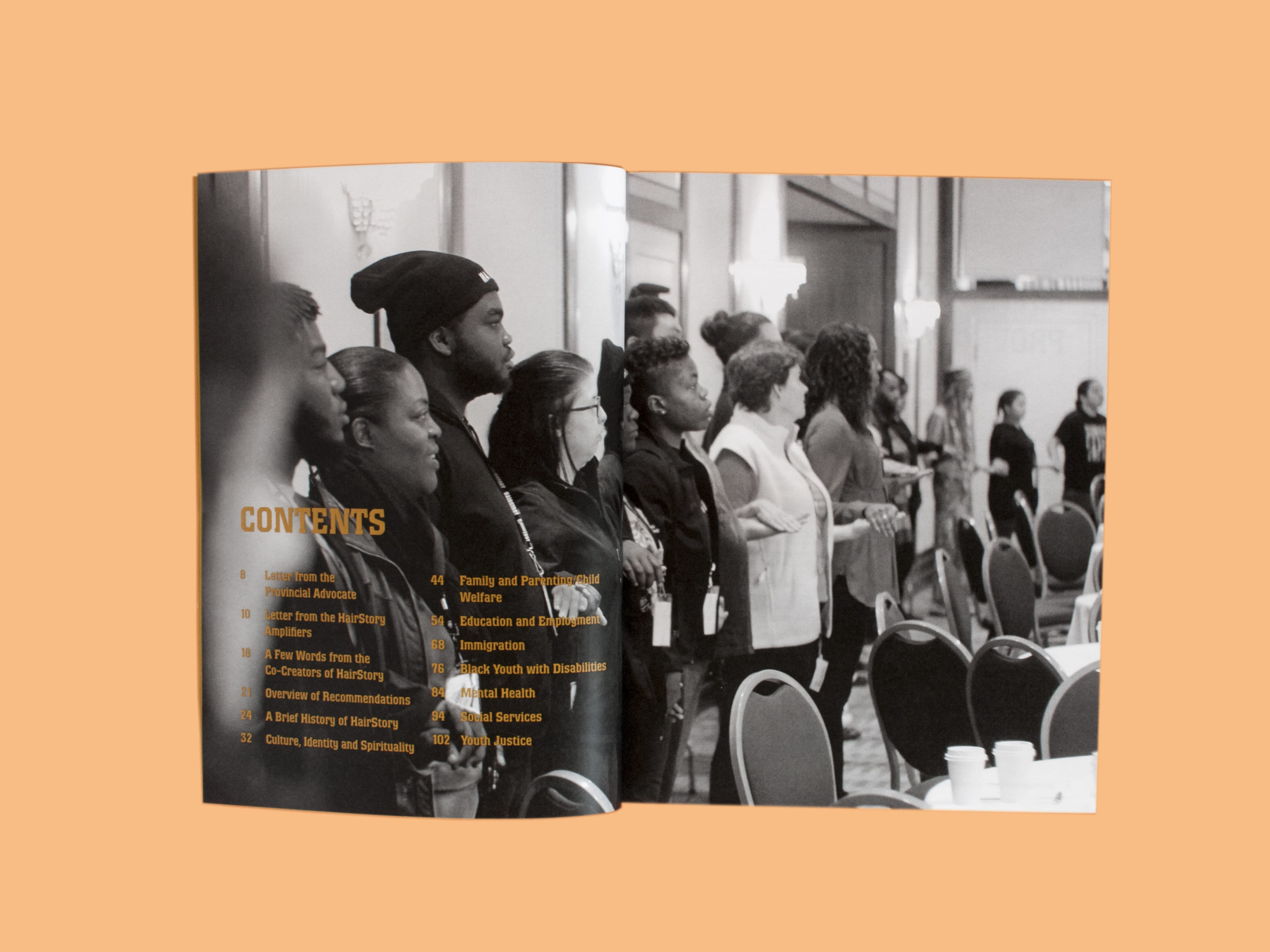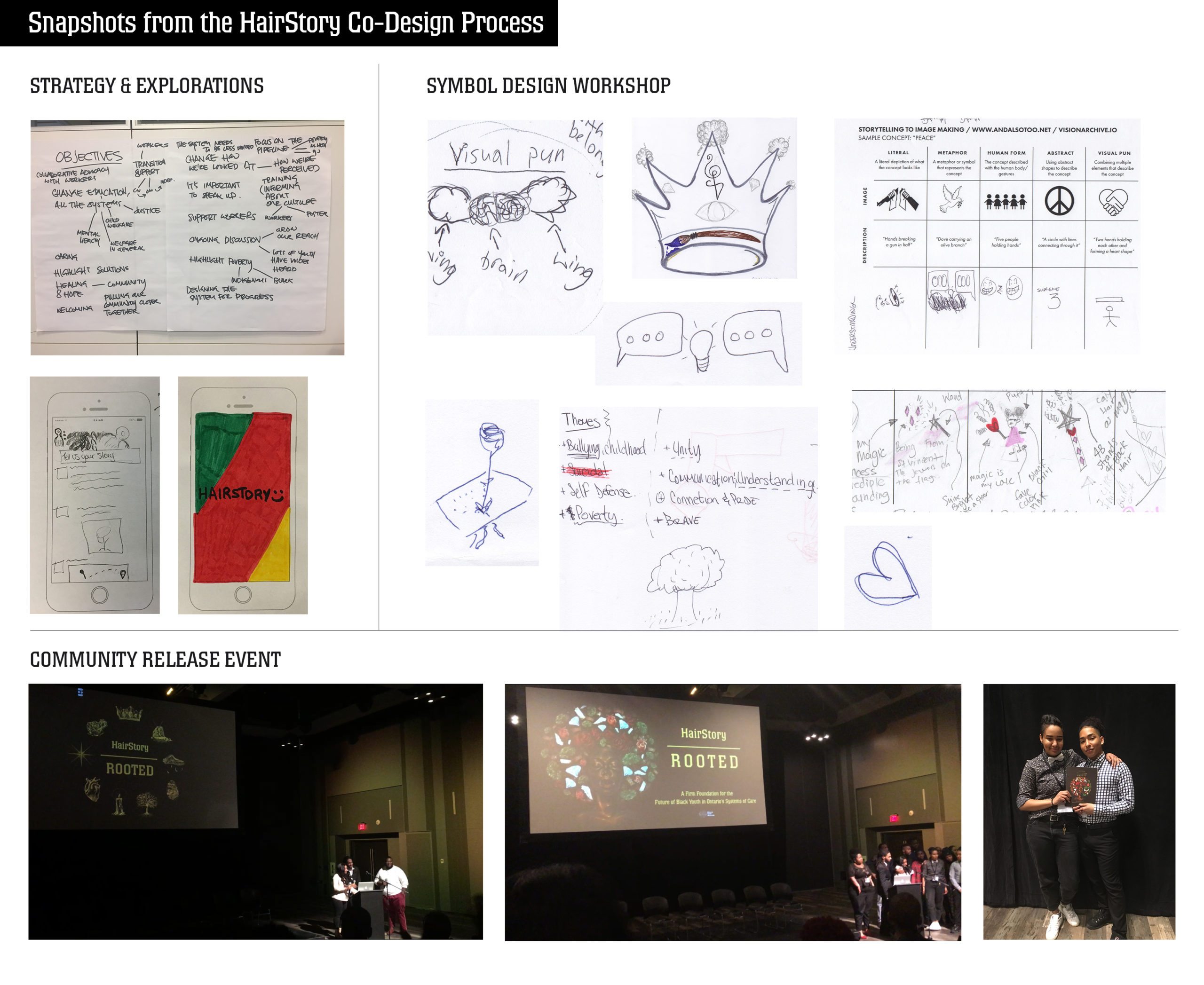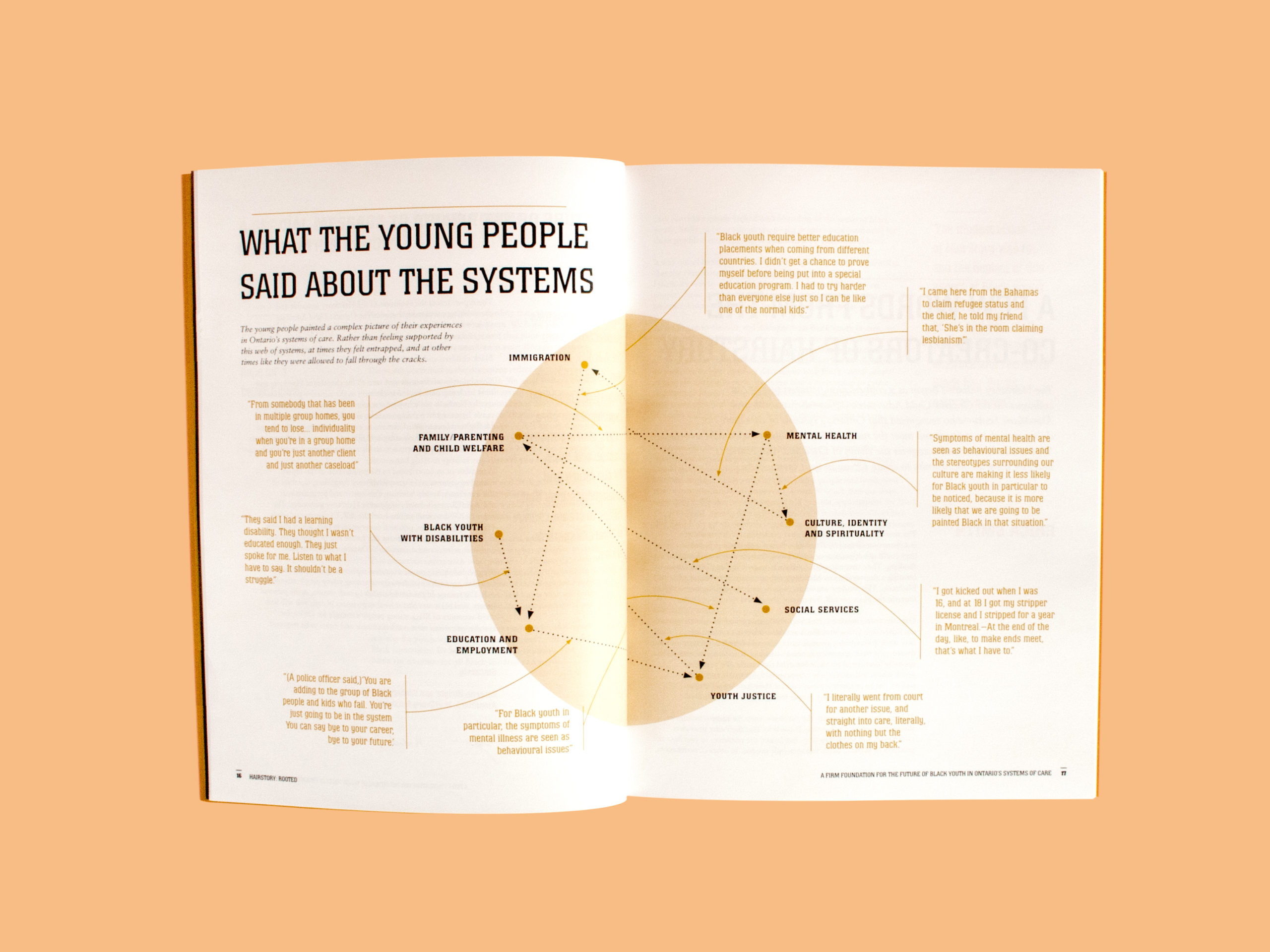Recently, we submitted HairStory — Rooted: A Firm Foundation for the Future of Black Youth in Ontario’s Systems of Care to the So(cial) Good Design Awards for consideration.
Although we believe competitions like these have been instrumental in shining a light on design that is happening in the social impact / social justice space, we also use their entry forms as a platform to push for more critical self-reflection in this field. Too often, designers are lauded for work that has little connection to the communities they are impacting and too rarely does the graphic design industry hold itself accountable for its harmful impacts.
We hope that by sharing some excerpts from our entry, we can contribute to a more fulsome conversation about the many types of impact that design can cause.

Strategy/ Methodology
Prompt: Describe the design process including any research, analysis or other information gathering and investigation that contributed to the solution.
“The team at And Also Too are founding members of the Design Justice Network, an alliance of over 500 practitioners and organizations worldwide committed to rethinking design processes so they center people who are often marginalized and harmed by design. Our practice is guided by the Network Principles:
- We use design to sustain, heal, and empower our communities, as well as to seek liberation from exploitative and oppressive systems.
- We center the voices of those who are directly impacted by the outcomes of the design process.
- We prioritize design’s impact on the community over the intentions of the designer.
- We view change as emergent from an accountable, accessible, and collaborative process, rather than as a point at the end of a process.
- We see the role of the designer as a facilitator rather than an expert.
- We believe that everyone is an expert based on their own lived experience, and that we all have unique and brilliant contributions to bring to a design process.
- We share design knowledge and tools with our communities.
- We work towards sustainable, community-led and -controlled outcomes.
- We work towards non-exploitative solutions that reconnect us to the earth and to each other.
- Before seeking new design solutions, we look for what is already working at the community level. We honor and uplift traditional, indigenous, and local knowledge and practices.
We put these principles into practice through collaborative design processes that are centered around the communities that will be most impacted by the work.”
You can read the full story about our co-design methodology with HairStory here.

Solution/Contribution
Prompt: Describe your design solution/deliverables and how they achieved project goals and objectives
“For us, the results and impact happen through the co-design process and not at the end of it. For this reason, we don’t describe our work as “solutions” — they are instead artifacts and tools that represent a moment in an ongoing community organizing effort.”

Results/Impact
Prompt: Provide quantitative/qualitative evidence of the effectiveness of the solution and/or how overcoming any special circumstances and/or challenges on the project demonstrate the effectiveness of the solution.
“We want to acknowledge that co-design processes are as challenging as they are beautiful. In award publications like these, rarely are designers called upon to think through the possible negative impacts of “design for social good.” Through the process, the Advisors and Amplifiers were living the experiences of the report, which meant that the work could be emotionally draining and triggering. Our deepening relationships with the youth, along with our own experiences in the systems the young people were struggling with, meant that we were also impacted on many levels. Access to mental health supports, taking space from the work, and slowing down were some of the many ways in which we all received and offered support. While we believe strongly in the power of the co-design process to create design justice, we feel it is important to convey that there can be a high cost to this work, and if support is not made available, that cost has the potential to be too high.”
About Hairstory
HairStory: Rooted is a report issued to decision makers and service providers connected to Ontario’s systems of “care” including child welfare, mental health, and youth justice. It was co-written and co-designed with Black youth who have lived experience in these systems. Read our story about the co-design process here. Learn more about HairStory at www.hairstory.ca.